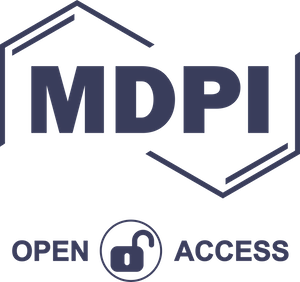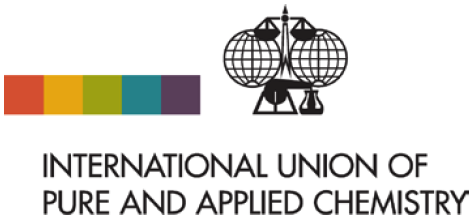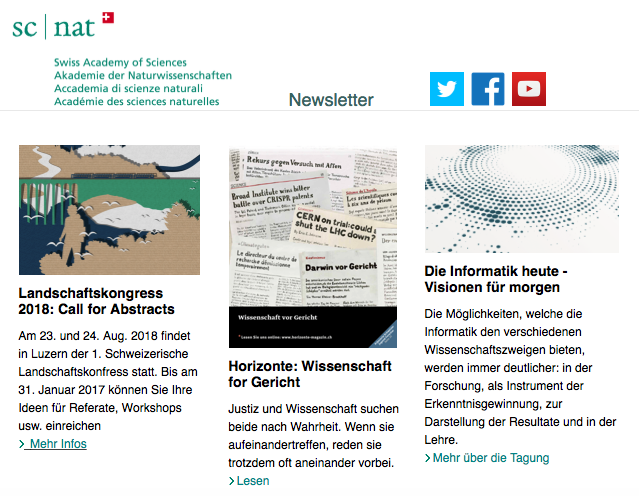Chemistry industry innovators from 27 countries will meet at the 2nd European Chemistry Partnering
- More than 160 companies and investors
- More than 90 Chemistry Start-ups and SMEs will present themselves
- Keynote Speaker is Marius Rosenberg from Adhesys Medical
- More than 600 Partnering meetings are expected
Following the success of the first event in 2017, the 2nd European Chemistry Partnering which takes place on 23rd February, 2018 will be on a much larger scale. The Venue is the Kap Europa, a state-of-the-art location in close proximity to Frankfurt’s Main Station. The organizers expect more than 500 decision-makers from the chemical industry and its user industries. Already 27 nations are represented. One third of all participants come from chemistry Start-ups. The share of innovative industrial enterprises amounts to 80 per cent, from Start-ups to mid-sized companies to large enterprises and corporations.
The format of the event makes the European Chemistry Partnering unique: three parallel activity streams determine the course of events: (1) Short presentations (Pitches) lasting six minutes, (2) 20-minute partnering meetings and (3) The exhibition. After the Keynote address, the partnering meetings start at 11 o'clock at more than 60 individual tables. The appointments are arranged by participants in advance via a special internet-based tool. At the same time, entrepreneurs introduce themselves in short presentations (pitches) in two parallel rooms. The organizers expect more than 500 partnering meetings, over 90 pitches and over 50 exhibitors.
The Keynote address will be given by Marius Rosenberg, founder and Managing Director of Adhesys Medical GmbH, an international success story. At the interface between materials science and medicine, the company quickly developed into a market leader. The product: a surgical adhesive. The company's history fascinates inventors, investors, Start-up entrepreneurs and large corporations alike.
A productive day
The focus of the one-day European Chemistry Partnering is on innovation. Dr. Holger Bengs, initiator of the ECP and Managing Director of BCNP Consultants says: "97 percent of the products around us contain at least one chemical process step. Trends and topics drive progress, things like renewable resources, digitization and big data; new substances and materials, new methods, better processes and apparatus from chemistry, nanotechnology or industrial biotechnology are changing our processes and products."
And he adds: "With the European Chemistry Partnering, we bring together creative people, movers and innovators. It's all about the business of tomorrow and the day after tomorrow. The ECP offers a high level of productivity and business contacts in just one day. A day for all with a view across borders, disciplines, industries and regions ".
Initiator and organizer of the European Chemistry Partnering is BCNP Consultants. In this BCNP is supported by IHK Hessen innovative in addition to many other well-known international supporters. The event’s main sponsor is Technologieland Hessen (Hessen Trade & Invest).
Details of the Event
2nd European Chemistry Partnering
23rd February 2017, 9am till 6pm
Kap Europam Osloer Str. 5, 60327 Frankfurt am Main, Germany
www.ecp2018.com
www.facebook.com/EuChemPa
www.twitter.com/EuChemPa
| * |
BCNP: A short profileBCNP Consultants is a Germany-based Consultancy that specializes in the areas of Biotech, Chemistry, Nanotechnology and Pharmaceuticals (BCNP). BCNP's core competences include scientific and technical expertise, strong networks and industry knowledge. The company provides Strategy, Communication and Sales consulting services via its divisions BCNP strategy, BCNP communications and BCNP connect. Specialist areas are Market and Technology analysis as well as Innovation scouting. Since 2016 BCNP has published the annual Compass to Europe´s Innovative Chemical Companies (www.chemistry-compass.eu), to encourage entrepreneurship in the chemical industry. Since 2017 the “European Chemistry Partnering“ market place, brings together, and engenders dialog among, creative minds and decision makers on an international stage. |
* |
David Spichiger, SCS
22.01.2018
SCS-MDPI Partnership: Profit from discounts for your OA publications
 SCS entered a new partnership and is proud to announce a closer collaboration with MDPI in Basel. SCS members profit from discounts on open access (OA) publishing in the following MDPI journals:
SCS entered a new partnership and is proud to announce a closer collaboration with MDPI in Basel. SCS members profit from discounts on open access (OA) publishing in the following MDPI journals:
| 20% discount for publications in Molecules mdpi.com/journal/molecules |
|
| 10% discount for publications in Catalysts mdpi.com/journal/catalysts |
|
| 10% discount for publications in Polymers mdpi.com/journal/polymers |
|
| 10% discount for publications in Pharmaceuticals mdpi.com/journal/pharmaceuticals |
When handing in your manuscript, please enter the SCS discount code.
Get the SCS-MDPI discount code (visible after the member login process only).
| * |
About MDPIMDPI (Multidisciplinary Digital Publishing Institute) is an academic open-access publisher with headquarters in Basel, Switzerland. Additional offices are located in Beijing and Wuhan (China), Barcelona (Spain) as well as in Belgrade (Serbia). MDPI publishes 188 diverse peer-reviewed, scientific, open access, electronic journals. Our publishing activities are supported by more than 15,700 active scientists and academic editors on our journals' international editorial boards, including several Nobelists. More than 263,500 individual authors have already published with MDPI. MDPI.com receives more than 8.4 million monthly webpage views.
|
* |
|
|
David Spichiger, SCS
18.01.2017
Chemistry Travel Awards 2018
Through the «Chemistry Travel Award», contributions towards the cost of participation at an international conference in the chemical sciences are granted to selected PhD students. The award is sponsored by the «Platform Chemistry» of the SCNAT and the Swiss Chemical Society.
2018 «Chemistry Travel Award»
The award includes a contribution of CHF 1000 towards the cost of an active participation (poster or oral presentation) at an international conference of three days or more between 15 May 2018 and 14 May 2019 in any field of the chemical sciences. Up to 45 awards will be distributed to selected doctoral students from Swiss research institutions. Selection will be based primarily on scientific accomplishments and on the submitted conference abstract.
- Only applications in English will be considered.
- The award can only be won once in a lifetime – winners of previous years are excluded.
- There is no limitation of winners per research group.
- The award money will be paid upon presentation of a confirmation of attendance from the conference.
The deadline is: 31 March 2018 (23:59)
Application for the 2018 »Chemistry Travel Award» is now open.
David Spichiger, SCS
06.01.2017
The United Nations Proclaims the International Year of the Periodic Table of Chemical Elements
 The United Nations (UN) General Assembly 72nd Session has during its 74th Plenary Meeting proclaimed 2019 as the International Year of the Periodic Table of Chemical Elements (IYPT 2019). In proclaiming an International Year focusing on the Periodic Table of Chemical Elements and its applications, the United Nations has recognized the importance of raising global awareness of how chemistry promotes sustainable development and provides solutions to global challenges in energy, education, agriculture and health. Indeed, the resolution was adopted as part of a more general Agenda item on Science and technology for development.
The United Nations (UN) General Assembly 72nd Session has during its 74th Plenary Meeting proclaimed 2019 as the International Year of the Periodic Table of Chemical Elements (IYPT 2019). In proclaiming an International Year focusing on the Periodic Table of Chemical Elements and its applications, the United Nations has recognized the importance of raising global awareness of how chemistry promotes sustainable development and provides solutions to global challenges in energy, education, agriculture and health. Indeed, the resolution was adopted as part of a more general Agenda item on Science and technology for development.
This International Year will bring together many different stakeholders including UNESCO, scientific societies and unions, educational and research institutions, technology platforms, non-profit organizations and private sector partners to promote and celebrate the significance of the Periodic Table of Elements and its applications to society during 2019.
The development of the Periodic Table of the Elements is one of the most significant achievements in science and a uniting scientific concept, with broad implications in Astronomy, Chemistry, Physics, Biology and other natural sciences. The International Year of the Periodic Table of Chemical Elements in 2019 will coincide with the 150th anniversary of the discovery of the Periodic System by Dmitry Mendeleev in 1869. It is a unique tool enabling scientists to predict the appearance and properties of matter on Earth and in the Universe. Many chemical elements are crucial to enhance the value and performance of products necessary for humankind, our planet, and industrial endeavors. The four most recent elements (115-118) were fully added into the Periodic Table, with the approval of their names and symbols, on 28 November 2016.
The International Year of the Periodic Table of the Chemical Elements will coincide with the Centenary of IUPAC (IUPAC100). The events of IUPAC100 and of IYPT will enhance the understanding and appreciation of the Periodic Table and chemistry in general among the public. The 100th Anniversary of IUPAC will be on the UNESCO Calendar of Anniversaries on 28th July 2019.
“As the global organization that provides objective scientific expertise and develops the essential tools for the application and communication of chemical knowledge for the benefit of humankind, the International Union of Pure and Applied Chemistry is pleased and honored to make this announcement concerning the International Year of the Periodic Table of Chemical Elements” said IUPAC President, Professor Natalia Tarasova.
Chemical Elements play a vital role in our daily lives and are crucial for humankind and our planet, and for industry. The International Year of the Periodic Table of Chemical Elements will give an opportunity to show how they are central to linking cultural, economic and political aspects of the global society through a common language, whilst also celebrating the genesis and development of the periodic table over the last 150 years. It is critical that the brightest young minds continue to be attracted to chemistry and physics in order to ensure the next generation of scientists, engineers, and innovators in this field. Particular areas where the Periodic Table and its understanding have had a revolutionary impact are in nuclear medicine, the study of chemical elements and compounds in space and the prediction of novel materials. The IYPT is endorsed by a number of international Scientific Unions and the International Council for Science (ICSU). The IYPT will be administered by an International Steering Committee in collaboration with the UNESCO International Basic Sciences Programme and an International Secretariat, to start operating in early 2018. In addition to IUPAC, IYPT is supported by the International Union of Pure and Applied Physics (IUPAP), the European Chemical Sciences (EuCheMS), the International Astronomical Union (IAU) and the International Union of History and Philosophy of Science and Technology (IUHPAST).
Contact:
IUPAC Secretariat
Research Triangle Park, North Carolina 27709 USA
;
Follow us on Twitter @IUPAC and #iupac100
About IUPAC: IUPAC was formed in 1919 by chemists from industry and academia. Since, the Union has succeeded in fostering worldwide communications in the chemical sciences and in uniting academic, industrial and public sector chemistry in a common language. IUPAC is recognized as the world authority on chemical nomenclature, terminology, standardized methods for measurement, atomic weights and many other critically evaluated data. In more recent years, IUPAC has been pro-active in establishing a wide range of conferences and projects designed to promote and stimulate modern developments in chemistry, and also to assist in aspects of chemical education and the public understanding of chemistry. More information about IUPAC and its activities is available at www.iupac.org. For further information, contact Dr. Lynn M. Soby, Executive Director, or
David Spichiger, SCS
22.12.2017
SCNAT Newsletter, December 2017
Landschaftskongress 2018: Call for Abstracts
Am 23. und 24. Aug. 2018 findet in Luzern der 1. Schweizerische Landschaftskonfress statt. Bis am 31. Januar 2017 können Sie Ihre Ideen für Referate, Workshops usw. einreichen
>Mehr Infos
Horizonte: Wissenschaft for Gericht
Justiz und Wissenschaft suchen beide nach Wahrheit. Wenn sie aufeinandertreffen, reden sie trotzdem oft aneinander vorbei.
> Lesen
Die Informatik heute - Visionen für morgen
Die Möglichkeiten, welche die Informatik den verschiedenen Wissenschaftszweigen bieten, werden immer deutlicher: in der Forschung, als Instrument der Erkenntnisgewinnung, zur Darstellung der Resultate und in der Lehre.
> Mehr über die Tagung
SWIFCOB 18 «Ökosystemleistungen: vom wissenschaftlichen Konzept zur praktischen Anwendung»
Mit der Tagung vom 9. Februar 2018 wollen wir dazu beitragen, Klarheit zu gewinnen, wo und wie das Konzept der Ökosystemleistungen in der Schweiz in Zukunft zur Anwendung kommen soll.
> Weitere Infos
Nahrungsversorgung aus dem Meer
Marine Aquakultur, also die Bewirtschaftung von im Wasser lebenden Organismen, hat ein grosses Potential, Nahrung aus dem Meer zu liefern. Ein wissenschaftlicher Bericht analysiert Optionen, die dazu beitragen können, das Angebot zu erhöhen, ohne künftigen Generationen deren Nutzen zu entziehen.
> Bericht
Tagung Parkforschung Schweiz 2017: der Bericht ist online
An der 2. Tagung der Parkforschung Schweiz stellten Wissenschaftlerinnen und Wissenschaftler die Ergebnisse von aktuellen Forschungsprojekten vor, die sie in den Pärken von nationaler Bedeutung und UNESCO-Welt-erbegebieten erarbeitet hatten. Die Referate und Poster deckten die Themen Gesellschaft, Bildung, Biodiversität und Wandel ab.
> Meldung
«Keine Gesellschaft ohne Wissenschaft», Buchvernissage von Thierry Courvoisier
Anlässlich der Herausgabe des neuen Buches von Thierry Courvoisier.
Buchvernissage im Haus der Akademien, Laupenstr. 7 in Bern am 9. Januar 2018.
> Anmeldung
weitere Aktivitäten der SCNAT
Page 87 of 299



